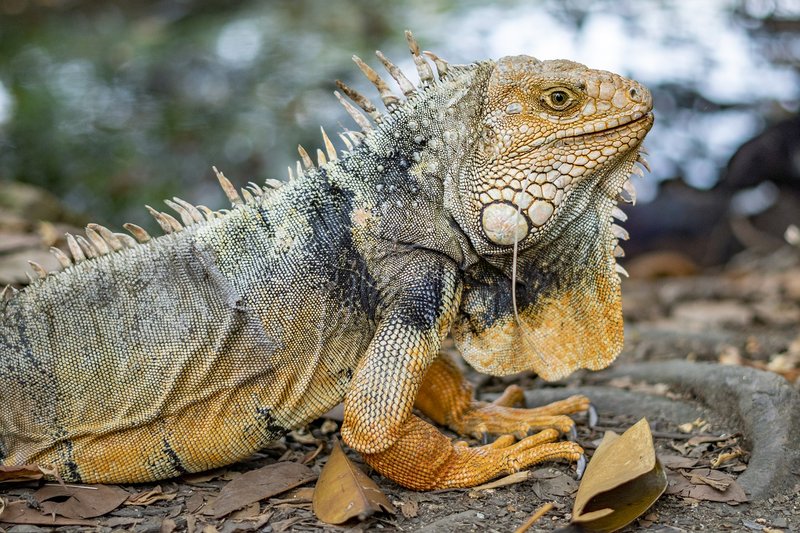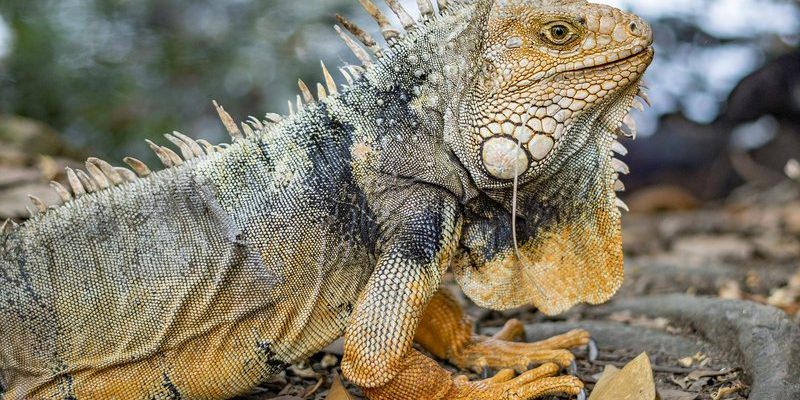
Now, if you’re new to the world of iguanas, you might wonder why this matters. Hibernation and brumation are terms often used interchangeably, but they have specific meanings when it comes to reptiles. While hibernation refers to a deep sleep in cold-blooded animals like bears, brumation is more about slowing down and becoming less active in response to colder temperatures. Let’s dive into the specifics of what iguanas do as the seasons change!
Understanding Hibernation vs. Brumation
Let’s break this down. Both hibernation and brumation are survival strategies for dealing with cold weather, but they aren’t the same thing. Hibernation involves a significant drop in metabolic rate, body temperature, and physiological activity, allowing mammals to survive long periods of cold. Think of it like a deep sleep, where energy is conserved to survive through the winter months.
On the other hand, brumation is what iguanas and some other reptiles experience. While they do slow down their metabolism, it doesn’t shut down completely. Instead, they become less active, eat very little, and stay in a state of rest, kind of like lounging in a comfy chair while waiting for spring to roll back around. It’s more about finding a cozy spot to chill than going into a deep sleep.
You might be wondering, why the distinction? It’s all about how these creatures adapt to their environment. Iguanas are cold-blooded and rely on external heat sources, so when temperatures drop, they need to conserve energy to survive the colder months.
Do Iguanas Hibernate or Brumate?
So, do iguanas hibernate or brumate? The answer is that iguanas primarily brumate. They may not go into a deep sleep like some mammals, but they definitely slow down. As temperatures drop, usually around late fall and winter, iguanas start to reduce their activity significantly. You might see them bask less often and even lose their appetite.
During this time, iguanas might spend more time in their hides or basking spots, avoiding the chill. This behavior helps them maintain energy levels without relying on food, which can be scarce in colder months. It’s a remarkable adaptation that ensures they survive until warmer weather returns.
This brumation phase can last several weeks to a few months, depending on the climate and specific species of iguana. In some cases, you might notice your pet iguana showing signs of brumation, like decreased activity or a refusal to eat. If you observe this, it’s perfectly normal!
Signs of Brumation in Iguanas
So how can you tell if your iguana is brumating? Here are some common signs to look out for:
- Reduced Activity: You might find your iguana lounging in its hide more than usual.
- Less Eating: Brumating iguanas often eat very little or stop eating altogether.
- Temperature Regulation: Your iguana may bask less frequently as it seeks warmth.
- Change in Behavior: They might become less responsive to stimuli and more lethargic.
Recognizing these signs can help you provide the best care for your iguana during this season. If you see these changes, it’s a good idea to monitor their environment. Make sure they have a warm place to retreat if they feel chilly, and keep an eye on their hydration levels, even if they’re eating less.
Brumation vs. Sleep: What’s the Difference?
You might be wondering, what sets brumation apart from regular sleep? Well, while both involve a lower level of activity, brumation is a deeper, seasonal state of rest that reptiles enter in response to changes in temperature. Think of it like a smart energy-saving mode for your iguana.
In contrast, regular sleep is temporary and might occur throughout the day or night, regardless of the season. It’s more like how you might take a quick nap to recharge after a long day. Brumation is a prolonged period and serves a crucial purpose in the iguana’s survival strategy.
Understanding this difference is key for pet owners. If you know your iguana is brumating, you might not need to worry too much about its refusal to eat or its lack of activity. However, if unusual behavior continues well into spring, that could be a sign of a health issue, and it might be time for a vet visit.
What Should You Do When Your Iguana is Brumating?
If your iguana is entering a brumation period, there are several steps you can take to make sure it stays healthy:
1. Temperature Control: Ensure that your iguana has access to a warm basking area, as they will still seek warmth even in brumation.
2. Hydration: Provide fresh, clean water daily. Even if they’re not eating much, hydration is essential.
3. Minimal Disturbance: Try to limit handling and interactions. Let them rest and enjoy their downtime, just like you would during a long weekend.
4. Observe Behavior: Keep an eye on changes in your iguana’s behavior. If it doesn’t emerge from brumation after several months or shows signs of distress, consult a veterinarian.
These simple steps can help you support your iguana’s natural rhythms while ensuring it remains healthy and comfortable during this cycle.
In the end, understanding whether iguanas hibernate or brumate gives us insight into the amazing adaptations of these reptiles. Remember, iguanas brumate, slowing down and resting as the temperatures drop, allowing them to survive until spring.
Being mindful of their needs during this time makes a big difference. It’s all about respecting their natural rhythms and ensuring they have a safe, warm environment while they rest. So the next time you notice your iguana snuggled up and less active, you’ll know it’s just taking a break, waiting patiently for warmer days ahead!

